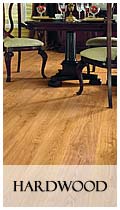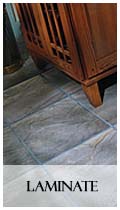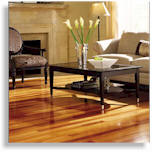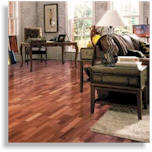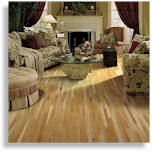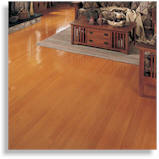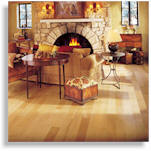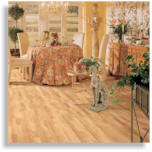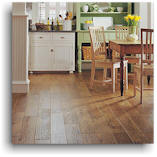| PAINTING CARPET CERAMIC FLOORING |
QUALITY SATISFACTION CERTAINTY GUARANTEED
HOME ABOUT US PAINTING INTERIOR PAINTING EXTERIOR PAINTING CARPET SELECTING CARPET HOW TO BUY CARPET CERAMIC TILE HARDWOOD FLOORS CARPET FAQ LINKS AREA RUGS CONTACT US CARPET FIBERS NEW CARPET TRENDS CARPET MAINTENANCE LAMINATE FLOORING VINYL FLOORING BAMBOO FLOORING CORK FLOORING CARPET TILES INSECTS & CARPET ORECK VACUUMS
Custom Home Painting & Carpet
Hardwood Flooring
|
Wood floors are the staple of the flooring industry. Solid hardwood floors have been used for centuries because of their natural beauty and durability while engineered wood flooring has recently become popular due to its ability to be installed below ground level while maintaining a real wood look and feel. Unlike laminate flooring hardwood floors can be refinished in order to bring back their natural warmth and luster. Solid floors can last a lifetime maintaining their beauty for years to come making them a timeless investment that, like ceramic tile, adds value to your home. One main appeal of hardwood is the variety of species available including Oak, Maple, Cherry, Hickory, Pecan, Pine, Beech, Birch, Walnut, and more. While laminate floors can mimic the looks of these woods, only hardwood has the natural warmth and feel of each in both finished and unfinished options. With the wide range of species available hardwood flooring offers the perfect match to any room in any home. Both engineered and solid floors are available in strip, plank, and parquet styles to achieve the best look for their environment. Hardwood Floors offer several installation choices ranging from nail, staple, or glue down methods as well as some free floating options depending on your needs. If you are considering purchasing a lasting floor that adds value to your home Hardwood Flooring is the way to go. With its wide range of installation options, species, and styles to choose from there is a hardwood floor that is right for you. Hardwood floors add a beautiful and natural touch. They also add value to your home and are highly praised in the resale home market. Today's hardwood floors have made advances in style, durability, maintenance and care, making them more widely usable throughout the home (with the exception of the bathroom where its use is not recommended due to potential moisture problems). With simple sweeping or vacuuming and occasional spot cleaning, wood floors will last a lifetime. There are hundreds of choices in style and color with today's options even spanning into exotic hardwoods. Most wood floors are available in several grades in a wide range of prices. CHPC has more at prices that will please even the most frugal of shoppers. We offer the best known brands and deliver the service and prices that guarantee your satisfaction. Decorating With Wood Floors Wood flooring is one of the most beautiful floors you can use in your decorating scheme. There are not only several colors available but there are also many different species as well. Each having their own distinct characteristics. Choosing the right wood floor for your specific taste and needs can be a challenge. Hopefully we can help take some of the guess work out of it. First, decide what type of finished look you want to achieve. If you're going after a modern or contemporary look, you may want to lean towards a wood species that has a cleaner look with less texture and grain such as Maple, Birch, or Cherry. If you prefer a more casual or rustic look, then you may want to consider an Oak or Pine. You may want to also consider the furniture you will be placing in the rooms where there will be a wood floor. If you have or will be purchasing wood furniture, you will want to make sure that the wood furniture will not clash with your new wood floor. You can either match the wood furniture to the floor or you can also have a contrast which is also a very nice look. For example, if you have dark mahogany, oak, or cherry furniture, it will show up much better on a light colored wood floor than it would on a dark wood floor. The opposite would be true if you have light colored furniture, in which case you might consider a darker wood floor. There are also many different sizes than wood floors are available in. In size, we are referring the width of the wood strips or planks as well as the lengths. Both width and length sizes vary dramatically. Usually, the smaller widths, known as "strip" floors, as well as the shorter lengths, known as "shorts", will give off a busier look since there will be more variation, while the wider widths, known as "planks" combined with the longer lengths tend to open up the look of an area. We discuss this in more detail in our "Textures and Finishes" article. Regardless of what look you're trying to achieve, we carry a wood floor just right for you. The different types of wood floors that handle are solid, glue down, staple down, and floating wood floors. And remember, we are the experts. If there is ever a question you have that we haven't answered on one of these pages, you can always contact us directly and we will spend as much time with you as you need to help you make the right decision. We want you to be 100% happy and satisfied with your purchase and all we ask in return is that you tell your friends about us. Solid or Engineered Flooring Occasionally we get people who ask us; "am I better off buying solid or engineered wood flooring?" Because of this, I have decided to add this section to our site. Listed below is a cross section of a piece of both solid and engineered wood flooring. While engineered wood floors can vary in overall thickness, the basic concept is the same. Look at the pictures and then read on.   Solid (Left) , Engineered (Right) In looking at these pictures, what's your first reaction? Like a lot of people, you probably said to yourself, "the solid wood must be better because it's twice as thick". Well, guess what, you're not correct. Before I go into why, let me explain the black line drawn on an angle on the picture of the solid wood. This represents where a nail would be driven into the floor during installation. Now allow me to explain. When comparing solid wood to engineered wood, we tend to think about resurfacing or "refinishing" the floor years down the road. This of course is directly related to the longevity of the flooring. Thinking about resurfacing the floor sometimes is the reason we may be misled into believing that the solid floor is better or will absolutely last longer. This is not so. Let's refer back to the pictures above. While there is no question that the solid wood floor is much thicker, take a look at where the nail is. When doing your resurfacing, maybe on the second or third resurfacing about 60 to 80 years from now, you are going to run into (literally) one of two things. It will be the nails with the solid wood floor, or the plywood core on the engineered floor. So, with that statement, now do you believe that the solid wood will really last longer? There are also other important factors to consider. A solid wood floor is usually less stable than an engineered wood floor. When I say less stable, I am referring to moisture and expansion related to that moisture. When you get climate changes in your home, which you absolutely will, wood flooring expands and contracts. With solid wood flooring, it generally expands and contracts a lot more than the engineered wood. Engineered wood flooring is constructed to be dimensionally stable, while most solid wood floors are simply cut pieces of wood from a tree. Considering solid wood floors are cut pieces of wood, there is a lot more room for error or "cabin grade" type wood to be used. What we're saying here is that if you happen to see a solid wood floor real cheap, you are probably getting exactly what you are paying for, junk. While the same holds true for engineered wood floors, there is a lot less cabin grade around. As we mentioned, the solid wood floors expand more than the engineered, and they expand vertically as well as horizontally. While you get little to no vertical expansion with most engineered wood floors, you may get a lot of this vertical expansion with the solid floors. Vertical expansion is when the boards will actually grow up and shrink down in addition to the side to side or horizontal expansion and contraction. The end result of this can be raised boards that sometimes catch your shoes and become a trip hazard. When looking at wood flooring samples, you will notice that most solid, pre-finished wood floors have beveled edges. These beveled edges counteract the raised boards that can become trip hazards, and sort of act as a smoother for the joints. The down side to this is the appearance. The beveled wood floors are not as natural looking. Also, when you get horizontal contraction, when the boards may shrink slightly, unfortunately the bevel edges tend to accentuate these gaps or basically make them look bigger. We have also heard complaints from customers who have had this type of wood flooring, that the bevels seem to hold the dirt when trying to clean the floor. This could be true depending on the depth of the bevel. Summary We are not saying that solid wood floors are bad or of lesser quality, but here are some facts you should know when considering what to buy. Unless you spend serious money on a solid wood floor, be it pre-finished or raw, you will most likely get a wood floor that will have characteristics as we described above. In some cases, with certain species, you may have no choice because solid wood is all that particular species is available in. But, if you are looking at Oak, Maple, Cherry, Hickory, Pecan, Brazilian Cherry, or one of the other somewhat more popular species, you can most likely find it in an engineered floor, and it will probably be a better value. Engineered wood floors are available in styles that have different installation methods. They include floors that can be installed using staple down, glue down, or free float methods. Over the past five or more years, the free float method seems to be the method of choice and we'd have to agree with that. Since the free floating wood floors do not actually touch the sub-floor, there is a near zero chance that you will have any problems with this floor. Additionally, with other installation methods you get those uneven gaps due to the standard expansion and contraction that we talked about previously. With floating engineered wood floors, when they expand and contract, they do so as one whole unit, not as individual planks so you see no change. Wood Flooring Installation Methods Wood Flooring Textures And Finishes Wood Flooring Species
Free In Home Estimates - 972-596-9985 - Email Us
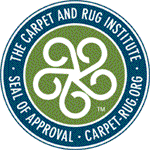
Custom Home Painting & Carpet Service Cities:
Dallas · Richardson · Plano · Austin · Allen · McKinney · Frisco · Flower Mound · Coppell · Highland Village
Lewisville · Carrollton · Farmers Branch · The Colony · Garland · Sasche · Rowlett · Rockwall · Wylie
Forney · Heath · Sunnyvale · Mesquite · Fort Worth · Arlington · Irving · Grapevine · Grand Prairie
Southlake · Hurst · Euless · Bedford · Bee Cave · Cedar Park · Dripping Springs · Leander
Georgetown· Lakeway · Pflugerville · Round Rock · West Lake Hills · Bastrop · San Antonio
Custom Home Painting & Carpet specializes in these Neighborhoods:
Forest Creek Estates · Hunter’s Glen · Watters Crossing · Deerfield · J. J Pearce · Fairways of Ridgeview
Stonebridge Ranch · Russell Creek Estates · Yale Park · Twin Creek · Prestonwood Hills · Glen Heather
Harrington Homeplace · Pittman Creek Estates · Ranch Estates · Whiffletree · Wentworth Estates
Fairways of Ridgeview · Willow Bend Estates · Preston Meadow · Highlands of Preston Ridge
Stonehaven Estates · Plano Trails · Chase Oaks · Carriage Hills · Hills of Indian Creek · Dallas North Estates
|
||||||||||||||||||||||||||||||||||||||||||||||||
